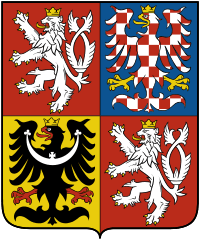Frequently asked question - Open call ZDOVA1 and ZDOVA2

Published
1. Travel costs - how to set it correctly in the project budget?
The budget chapter “Travel costs" contains only fixed items, which can be selected only once. All expenses that fall into this item must be combined and the average of individual values set as the unit price. If the applicant applies for trips to Iceland and Norway at the same time, he adds up all the per diems, sets the unit price as the average of the rates for 1 night and explains the breakdown of the amount in the description of the item.
The current amount per diems is available for download here. If the rates per diems are too high with regard to the efficiency of expenditure (e.g. with a higher number of participants), it is possible to set a lower rate, but this must be observed throughout the project implementation. The applicant is not obliged to apply per diems, the rate only sets the maximum possible value.
2. Indirect Costs (overheads) - How to calculate and enter them in the budget?
If the method of calculating overheads is chosen a flat rate of up to 15% of direct eligible staff costs, then it is calculated from 15% of wage costs, both in the Management chapter and in the Services chapter. From all wage costs per employee (employment contract, addendum to the employment contract, DPP, DPČ) in the Management chapter, calculate 15%, manually create the item "management overheads", which will not exceed 15% (rounded to whole numbers below ). Subsequently (if relevant) you will similarly create the item "Overheads of Services".
If you use the flat rate method of up to 25% of the total (net) direct eligible costs, then it is calculated from 25% of all direct costs of the project without subcontracting. The direct costs are all expenses associated with the implementation of the project and can be accounted for and assigned directly to the project (e.g. personal expenses for staff, travel expenses, participation fees, expenses for tangible and intangible new or used assets, consumables and goods directly classifiable to project).
Subcontracting is a service which, due to its nature, cannot be provided directly by the recipient or a partner and is therefore supplied by another entity. The resulting amount must then be created manually in the chapter "Services", which will not exceed 25% of all direct costs of the project without subcontracting, and which will be entitled “Project overheads".
3. How to upload the attachments in the IS CEDR?
This video guide (in Czech only) provides summary of how to fill in the grant application in IS CEDR (on the example of a cultural project) and the attachments. In the description of the video there are time traces of the video for viewing the completion of a specific bookmark in the IS CEDR, attachments and submission of the application.
The procedure of each attachment depends on its nature:
-
documents ready to upload (e.g. proof of legal personality / power of attorney / EIA), upload in the section "Attachments" in IS CEDR via the button "New", where you select the appropriate document type and select the file from the PC and upload.
-
documents based on a template (e.g. the summary of the grant application in English) should first be generated in the IS CEDR and then adjusted as needed. Once they are ready, upload them to the IS CEDR and, if required, sign them with a qualified electronic signature in the IS CEDR.
Do you have any questions about the implementation and setup of the project? Have a look at the Guideline for Applicants where you will find detailed information or send us an email to czp@mfcr.cz.

